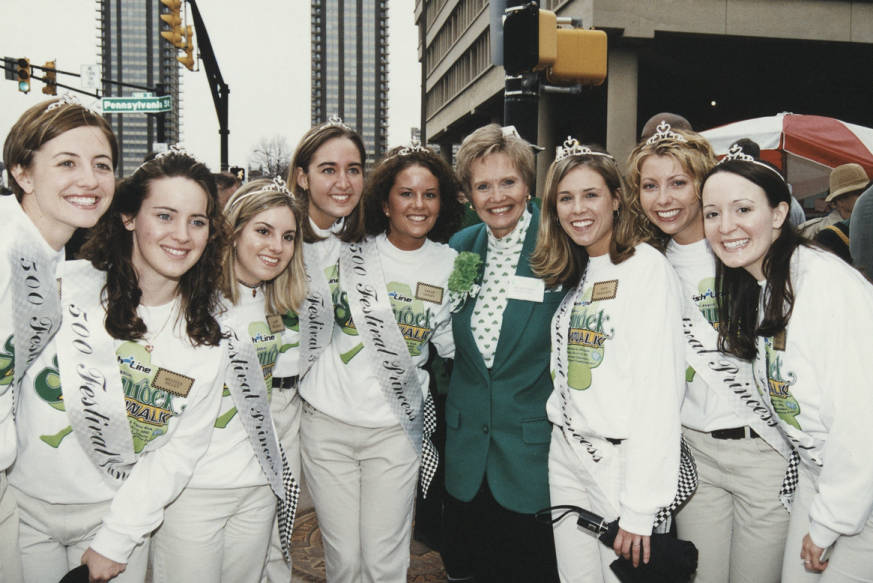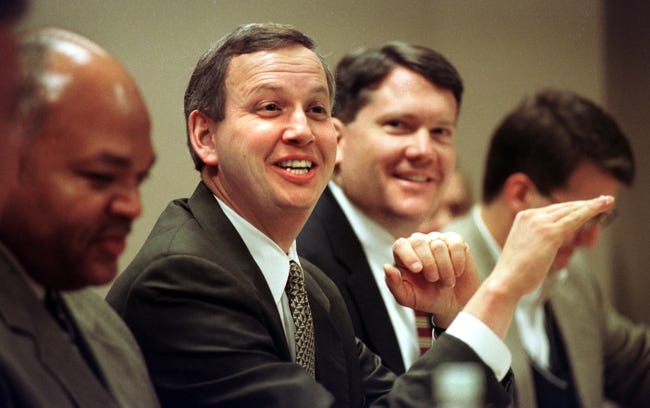Bart Peterson made history in the election of 1999 when he became the first Democrat elected mayor of Indianapolis since in 1963. Also significant was the appearance of four candidates on the ballot for the general election.

After an unsuccessful campaign for governor and a controversial second term, Republican mayor Stephen Goldsmith declined to run again in 1999 (See ). In May, the nominated Secretary of State Sue Anne Gilroy, who won the primary election with 60 percent of the vote over businessman Bob Parker. Goldsmith quickly endorsed Gilroy and gave her more than $300,000 in leftover campaign funds.
Bart Peterson, a real estate executive and former chief of staff for Governor Evan Bayh, easily defeated two opponents to win the nomination. Libertarians chose Andrew Horning, who had previously run for the state legislature and .

Our Party, a new grassroots coalition, presented a slate of political newcomers for mayor and seats on the . John Gibson, a minister, was the candidate for mayor. Our Party positioned itself as a group of “average citizens” who wanted to place the concerns of people over the demands of established political parties.
legislation that combined Indianapolis government with affluent suburban townships in 1970 helped Republicans win eight mayoral elections in a row. Peterson offered Democrats their best chance to elect a mayor under those conditions. He had connections with city business leaders, a tough approach to crime, and the ability to quickly raise campaign funds.
National Republican and Democratic leaders focused their attention on Indianapolis because of the competitive nature of the election and its threat to Republican control. and historic promise of the election. Media outlets excitedly reported that the likely winner would be either the first woman or the first Democrat in three decades to hold the office.
Although most political observers viewed Peterson as an underdog, the Democrat campaigned on what became known as the Peterson Plan, a 95-page booklet that offered detailed proposals for solving the city’s problems. It was available to anyone upon request and contributed to Peterson’s image as a champion of accountability and innovation.
Gilroy, who had also been the city’s director of , said she wanted to help Indianapolis become “safer, smarter and more livable.” She pledged to build on the expansion of business and economic activity that occurred during Goldsmith’s tenure. Like Peterson, she spoke of the need to fight crime and calm lingering racial tensions and mistrust between police and some residents of the city. Gilroy noted that, as a woman, she understood the concerns of voters in other minority groups whose local populations were growing rapidly.
All of the candidates in the historic four-way race conducted energetic campaigns. Peterson and Gilroy especially spoke to groups of voters in townships across the city and appeared in four televised debates. Supporters of both candidates agreed that the election would be close. By October, however, polls showed that Peterson pulled ahead of Gilroy, in large part due to public rejection of her controversial television ads.
Peterson won with 52 percent of the vote to 42 percent for Gilroy, with the rest divided among third-place finisher Horning and Gibson. Democrats also increased their number of seats on the City-County Council. Political pundits attributed Peterson’s victory to demographic changes that included an increase in minority populations and continued movement of traditional Republican voters to the outlying suburban counties.
Peterson’s victory restored Democrats to the mayor’s office and ended three decades of Republican dominance of city government.

Help improve this entry
Contribute information, offer corrections, suggest images.
You can also recommend new entries related to this topic.

